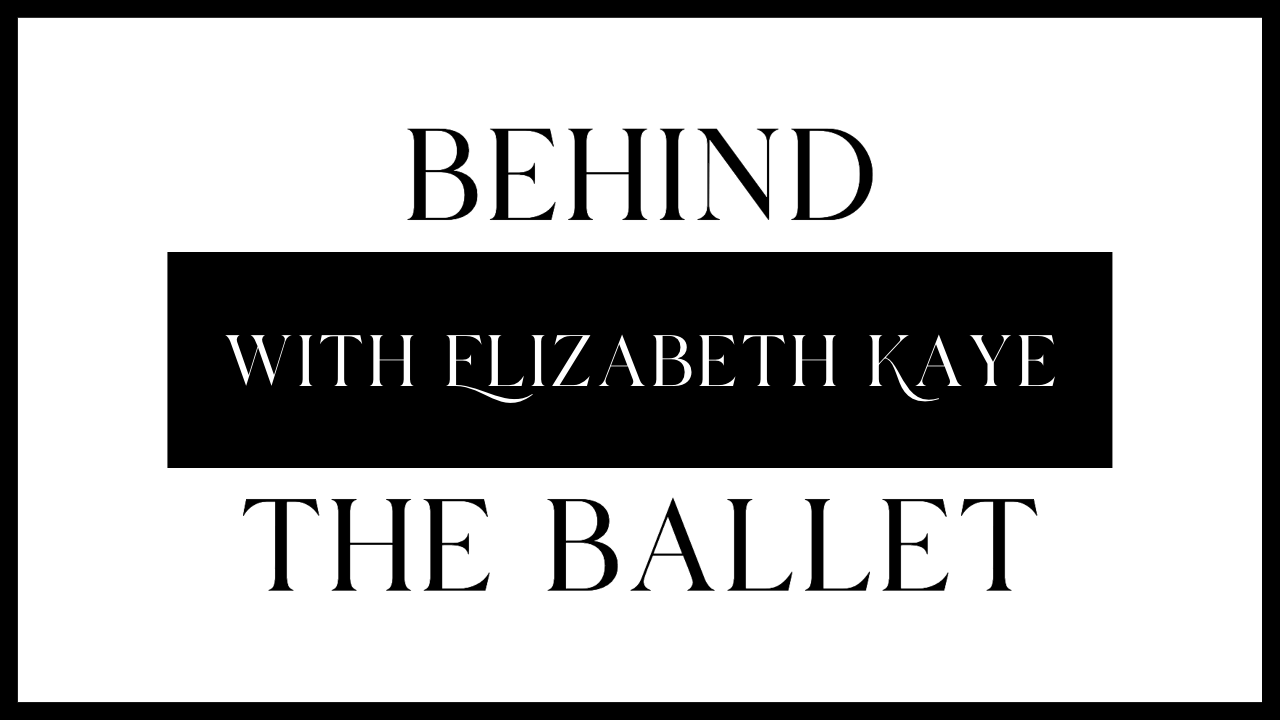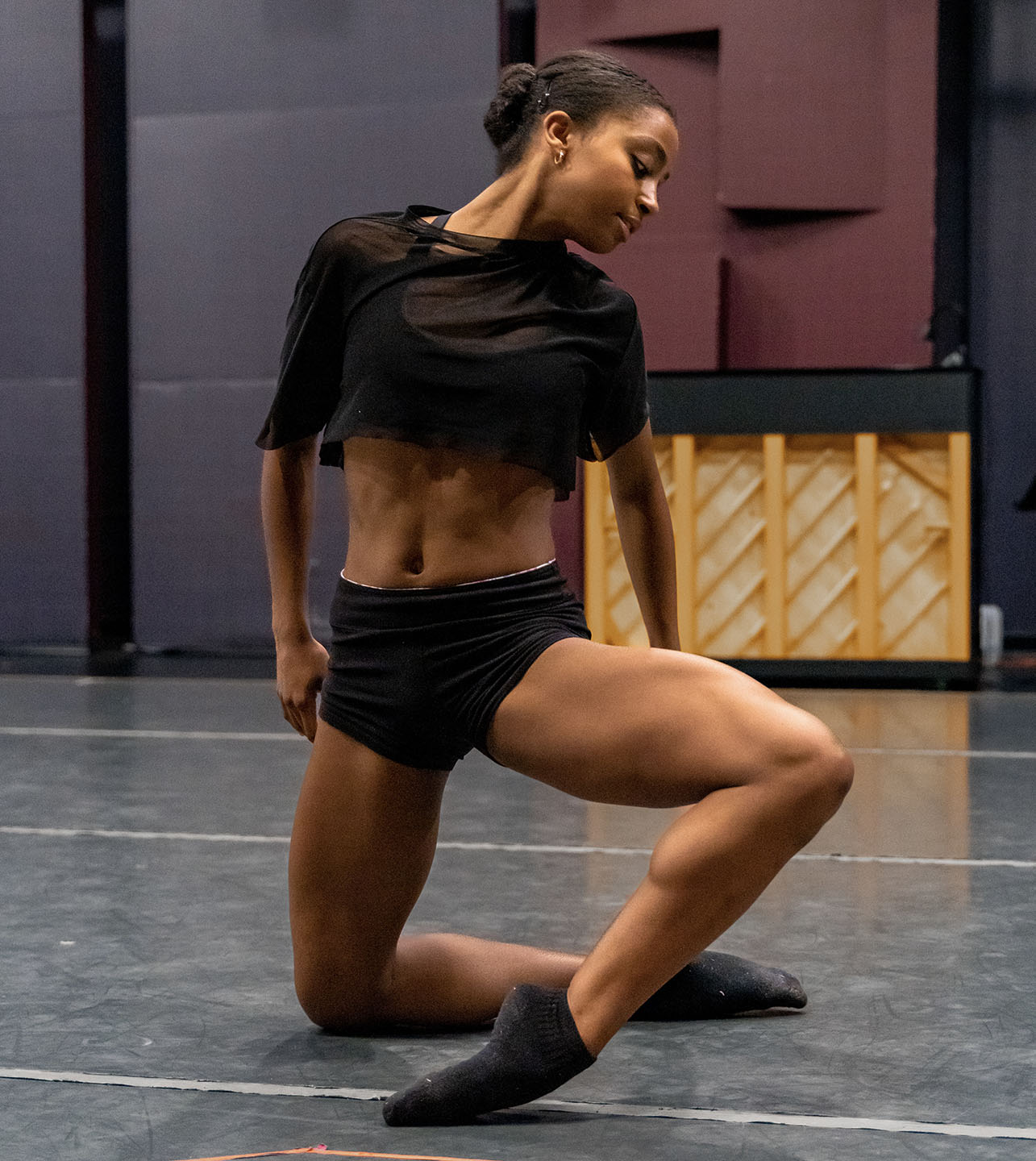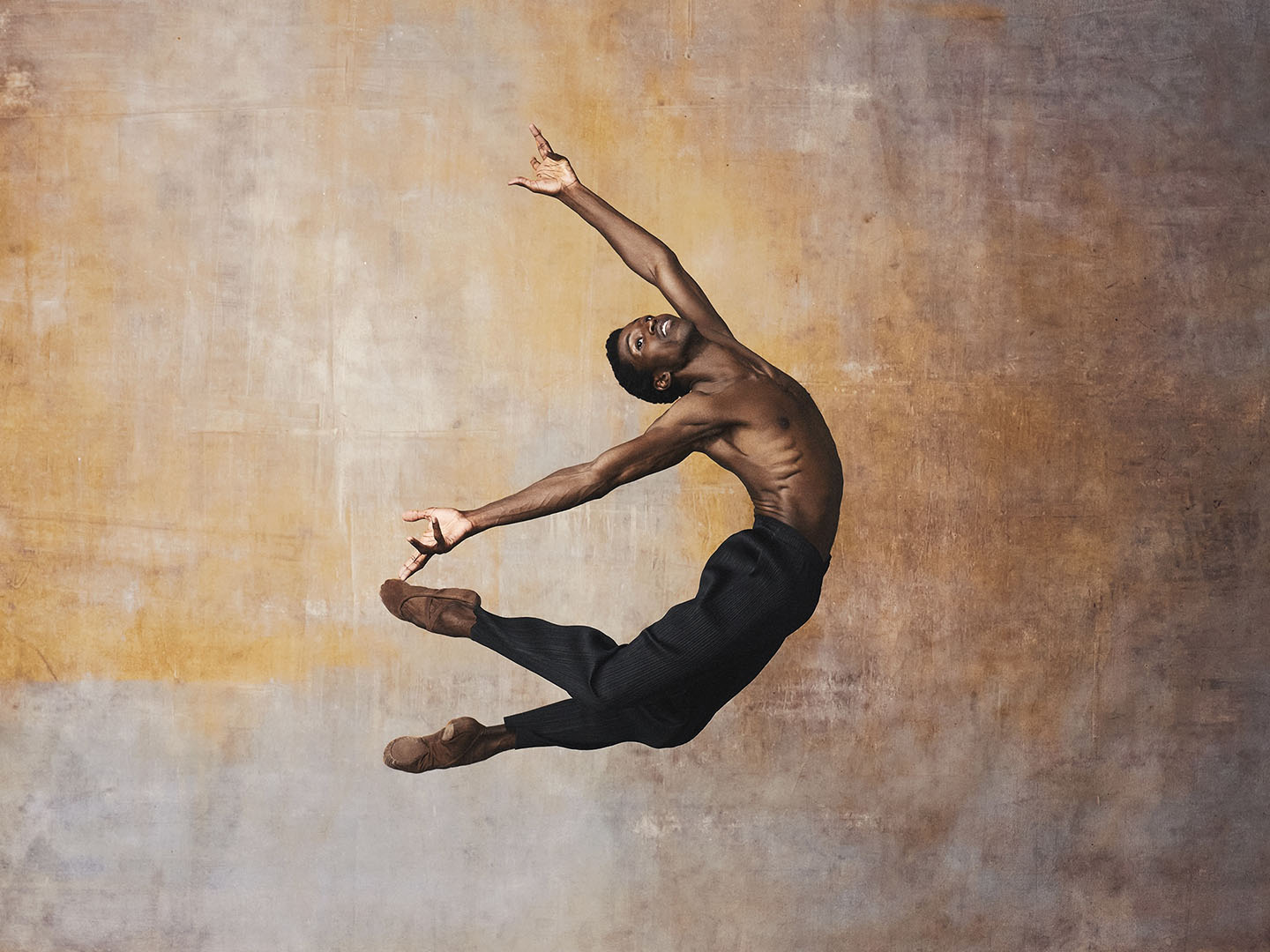October 2, 2023
After the success of our summer series, we are delighted to bring you the next iteration of Behind the Ballet with Elizabeth Kaye, a series of talks with ABT’s Dance Historian, renowned ballet lecturer, and New York Times #1 best-selling author. Each Behind the Ballet video provides a deep dive into the 2023 Fall season programs: Classics Old and New, 20th Century Works: Balanchine and Ashton, and 21st Century Works: King, Ratmansky, and Bond. Explore the videos below and find out what lies behind the ballet!
Classics Old and New
In Classics Old and New, Kaye takes audiences on a journey through Alexei Ratmansky’s Piano Concerto No. 1, Jiří Kylián’s Petite Mort, and Harald Lander’s Études. Kaye discusses how each choreographer’s unique vision and specific style ultimately culminated in the distinctly unique masterpieces presented in the program.
October 2, 2023
Behind the Ballet with Elizabeth Kaye
2023 Fall Season
After the success of our summer series, we are delighted to bring you the next iteration of Behind the Ballet with Elizabeth Kaye, a series of talks with ABT’s Dance Historian, renowned ballet lecturer, and New York Times #1 best-selling author. Each Behind the Ballet video provides a deep dive into the 2023 Fall season programs: Classics Old and New, 20th Century Works: Balanchine and Ashton, and 21st Century Works: King, Ratmansky, and Bond. Explore the videos below and find out what lies behind the ballet!
Posted In
ExploreSeptember 29, 2023
From Classic Storybook Ballet to High School Teen Comedy:
Homages and Adaptations of Shakespeare’s A Midsummer Night’s Dream Through the Years.
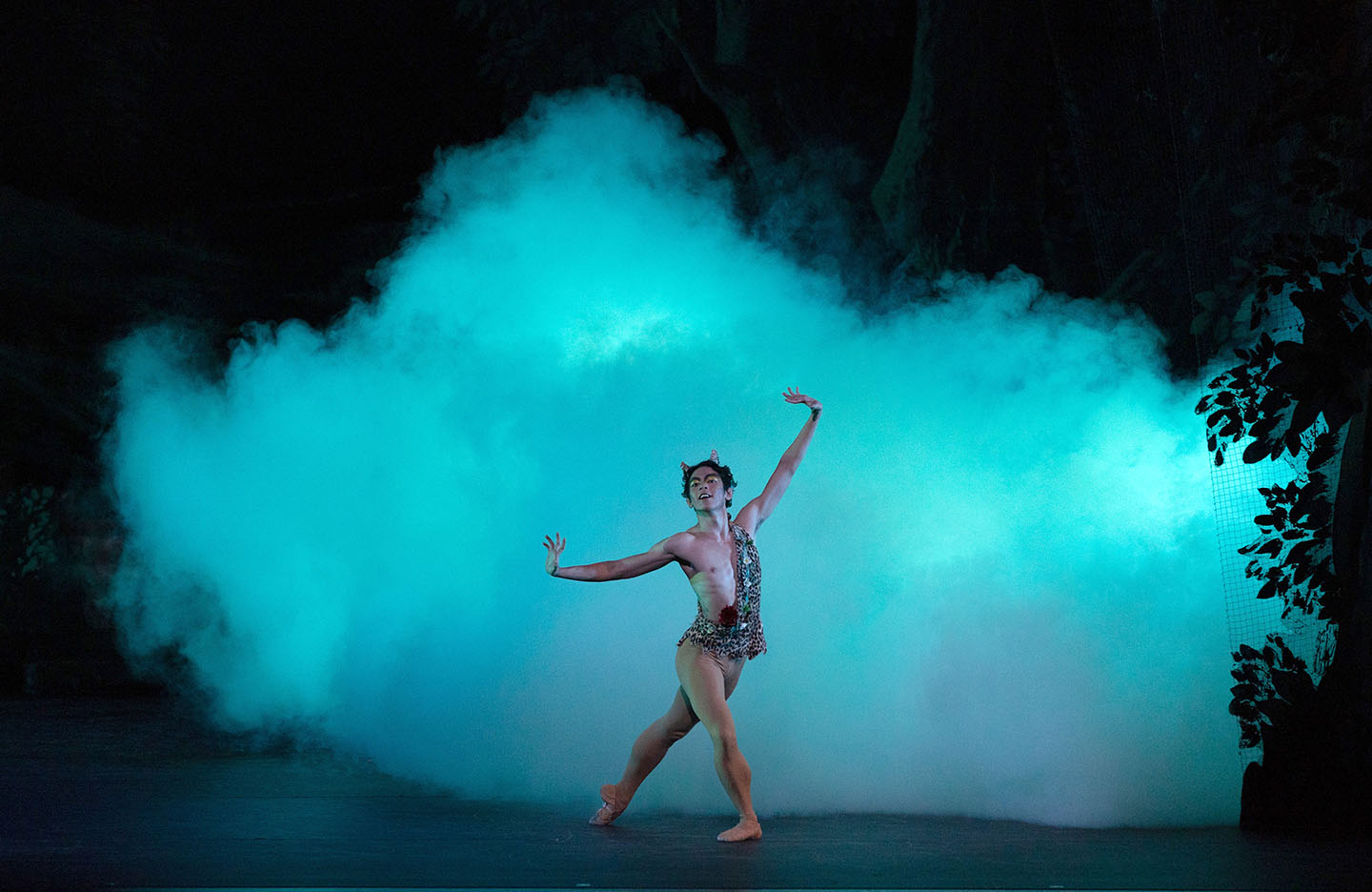
Returning for a second year in a row, Frederick Ashton’s The Dream retells Shakespeare’s classic comedy, A Midsummer Night’s Dream, through the scope of ballet—a mystical journey through the forest filled with fairies, mischief, and entanglements of the heart.
The beloved Shakespeare tale has seen many transformations throughout time, transporting the characters from Ancient Greece to Victorian England and from the stage to screen and back again. Here are seven retellings of Shakespeare’s comedy of errors, ranging from 1980s rock operas to early 2000s teen comedies.
Swingin’ the Dream (1939):
An almost-forgotten jazz and swing musical from the Golden Age of Broadway
With a stacked bill of America’s most famous Black artists at the time– including Louis Armstrong, Maxine Sullivan, and Bud Freeman – the creators were ready for their jazz and swing rendition of Shakespeare’s comedy to be a great success. Also joining the impressive credits was Agnes de Mille, a renowned choreographer who choreographed Rodgers and Hammerstein’s Oklahoma!, in addition to several ballets for New York City Ballet and American Ballet Theatre.
Though there was incredible talent involved in the production, Swingin’ the Dream proved to be a complete flop. Premiering in 1939, the musical closed after only 13 performances, and no musical recording or complete copy of the script survived.
The Dream (1964):
Frederick Ashton’s storybook ballet, returning for performances by American Ballet Theatre this Fall
Returning for ABT’s 2023 Fall season, Frederick Ashton’s retelling of Shakespeare’s A Midsummer Night’s Dream beguiles audiences as his lush, lively characters tangle themselves in love and mischief deep within a magical forest in Victorian England. This happy ode to the illusory nature of love is set to a spellbinding score by Felix Mendelssohn and arranged by John Lanchbery with sets and costumes by David Walker and lighting by John B. Read.
Premiered by The Royal Ballet in 1964, Ashton’s ballet “contains some of the most delightful choreography—intricate, funny, plush, and, at times, extraordinarily sensual—ever made.” (The New Yorker)
Labyrinth (1986):
A 1980s cult classic homage with David Bowie
Described by The Atlantic as a “Bowie rock opera,” Jim Henson’s fantasy feature was received critically in 1986 – today, it’s a beloved cult classic. From the creator of the Muppets, Henson’s movie sees a 16-year-old Jennifer Connelly as Sarah exploring the winding labyrinth just like Shakespeare’s characters in A Midsummer Night’s Dream.
At the heart of the fairytale Labyrinth is the Goblin King Jareth, played by the genre-defining David Bowie. Bowie is also credited for the synth-electronic score, which uses his iconic sound aesthetics to complement the movie’s surrealist tale of knights, monsters, and coming of age.
The Sandman Issue #19, “A Midsummer Night’s Dream” (1990):
Author Neil Gaiman’s DC Comic series turned hit Netflix
Neil Gaiman, author of Coraline, Good Omens, and American Gods, created the celebrated DC Comic The Sandman alongside artists Sam Kieth and Mike Dringenberg, which ran for 75 issues from 1989-1996. The comic series centers around Dream of the Endless, who rules over the Realm of Dreams. His siblings, known as the Endless, take on other physical personifications such as Destiny, Desire, and Despair.
The Sandman Issue #19 depicts the very first 16th century staging of Shakespeare’s A Midsummer Night’s Dream, formed in creative partnership with Dream. A core issue of the series, #19 received a World Fantasy Award for short fiction in 1991. Now, The Sandman has been brought to life on the screen by Netflix as a television series, bringing in more than 1 billion minutes (about 1,901 and a half years) of viewing on the streaming service in its opening weekend.
Mickey Mouse Works Episode #11 (1999):
Disney takes on the Shakespeare classic
Arguably the most popular cartoon character in history, Mickey Mouse stars in a retelling of A Midsummer Night’s Dream in Disney’s popular cartoon, Mickey Mouse Works. Alongside Mickey are fellow members of the Clubhouse like Minnie Mouse and Donald Duck. Goofy predictably, and hilariously, plays Puck.
Running from 1999-2001, this short-lived cartoon series was beloved by many audiences for its ode to the Golden Age of Disney. Each episode featured a series of shorts of varying lengths, using animation and art styles from the company’s 1950s cartoons. Mickey Mouse Works was later incorporated into House of Mouse, which continued to run until 2003.
A Midsummer Night’s Dream (1999):
Michelle Pfeiffer and Stanley Tucci transport the tale to 19th century Tuscany
Among the handful of movie adaptations, Michael Hoffman’s A Midsummer Night’s Dream stands out for its star-studded cast and faithfulness to the original script. Despite relocating the tale from Ancient Greece to the 19th century Italian countryside, the 1999 film keeps its heart in Shakespeare’s iambic pentameter.
Hoffman’s film was answered with a lukewarm critical reception, but it dazzles nonetheless with its gauzy romanticism and big-name celebrities playing leading roles. Michelle Pfeiffer is a stunning Titania; Christian Bale practices his ‘rich kid’ persona for The Dark Knight as Demetrius, and Stanely Tucci is a mischievous Puck. Though it was not lacking in celebrity, the film is often lumped in by critics with the high-volume of 1990s Shakespeare movie adaptations.
Get Over It (2001):
Turning Shakespeare from high school curriculum into high school comedy
The late 1990s should be considered the era of classics-turned-high school flick: Clueless is a valley girl version of Jane Austen’s Emma; 10 Things I Hate About You adapts Shakespeare’s Taming of the Shrew. The high school students, who probably read these classic stories in their English classes, were now the characters of convoluted love stories and comedies of error.
Get Over It, premiering in 2001, takes this trend into the new millennium with early 2000s starlet Kirsten Dunst. Loosely based on Shakespeare’s play, the film spins A Midsummer Night’s Dream into a charming high school comedy where the students, entangled in their own drama, are involved in the school musical, A Midsummer Night’s Rockin’ Eve.
From stage to screen to page, each iteration of Shakespeare’s A Midsummer Night’s Dream – a magical tale of whimsy and entanglements of the heart – continues to enchant audiences.
References:
https://www.theguardian.com/stage/2021/jan/06/swingin-dream-louis-armstrong-bottom-jazz-lost-shakespeare-musical-midsummer-nights-return
https://www.rsc.org.uk/events/tales-for-winter/how-swingin-the-dream-began
https://www.britannica.com/biography/Agnes-de-Mille
https://www.newyorker.com/goings-on-about-town/dance/american-ballet-theatre-10-24-22
https://www.theatlantic.com/entertainment/archive/2016/06/labyrinth-captured-the-dark-heart-of-childhood/489146/
https://www.hollywoodreporter.com/tv/tv-news/sandman-opens-strong-streaming-rankings-aug-1-7-2022-1235210628/
https://sandman.fandom.com/wiki/Sandman_19
https://disney.fandom.com/wiki/Midsummer_Night%27s_Dream
https://disney.fandom.com/wiki/House_of_Mouse
The writer, Lucy Kudlinksi, is the ABT Press Intern for Fall 2023.
Don’t miss your chance to see The Dream, in 20th Century Works: Balanchine and Ashton, from October 21-26!
ABT’s 2023 Fall season will run from October 18–29 at the David H. Koch Theater at Lincoln Center.
Join ABT for three programs, featuring eight ballets: Classics Old and New, 20th Century Works: Balanchine and Ashton, and 21st Century Works: King, Ratmansky, and Bond.
Buy TicketsJuly 11, 2023
Hosted by ballet historian Elizabeth Kaye, ABT’s Behind the Ballet pre-recorded lectures provide a look into each of the 2023 Summer season productions, drawing you into each ballet with musical and historical insight, clear synopses, and alluring anecdotes of rival ballerinas, style trends, and Tchaikovsky’s woes. Kaye’s unmistakable love of dance and its evolution is ever-present through each lecture, from the classics of Giselle, Swan Lake, and Romeo and Juliet to Christopher Wheeldon’s new work, Like Water for Chocolate.
Romeo and Juliet
In this final Summer 2023 installment of Behind the Ballet, Elizabeth Kaye revisits the creation of The Royal Ballet (1965) in the wake of World War II, which sought to bring back “what was lost after the war—the gentleness of life.” Kaye then explains how Shakespeare’s timeless tragedy is translated into movement through four heart-wrenching pas de deux and three acts of forbidden young love that reveal the universal language of ballet.
July 6, 2023
Hosted by ballet historian Elizabeth Kaye, ABT’s Behind the Ballet pre-recorded lectures provide a look into each of the 2023 Summer season productions, drawing you into each ballet with musical and historical insight, clear synopses, and alluring anecdotes of rival ballerinas, style trends, and Tchaikovsky’s woes. Kaye’s unmistakable love of dance and its evolution is ever-present through each lecture, from the classics of Giselle, Swan Lake, and Romeo and Juliet to Christopher Wheeldon’s new work, Like Water for Chocolate.
Swan Lake
This episode of Behind the Ballet takes on the 2023 Summer season’s third production: Swan Lake. Described by Elizabeth Kaye as the “crown jewel of classical ballet,” Kaye offers a sneak peek into the ballet’s ABT premiere in 2000 featuring current Artistic Director Susan Jaffe in the role of Odette-Odile. Kaye chronicles the tragic story of Swan Lake and how Tchaikovsky’s ethereal score shapes this iconic 19th Century tale.
June 20, 2023
Hosted by ballet historian Elizabeth Kaye, ABT’s Behind the Ballet pre-recorded lectures provide a look into each of the 2023 Summer season productions, drawing you into each ballet with musical and historical insight, clear synopses, and alluring anecdotes of rival ballerinas, style trends, and Tchaikovsky’s woes. Kaye’s unmistakable love of dance and its evolution is ever-present through each lecture, from the classics of Giselle, Swan Lake, and Romeo and Juliet to Christopher Wheeldon’s new work, Like Water for Chocolate.
Giselle
In this episode of Behind the Ballet, Elizabeth Kaye explains the renowned classic Giselle. Kaye begins with an enticing overview of the Romantic era, and how it shaped the making of this ballet from the introduction of pointe shoes and short tutus to the romance between Carlotta Grisi (the original Giselle) and choreographer Jules Perrot. She then offers an in-depth synopsis of the production’s tragic tale in two acts—an unforgettable story of maddening love, betrayal, and deceit.
June 13, 2023
Hosted by ballet historian Elizabeth Kaye, ABT’s Behind the Ballet pre-recorded lectures provide a look into each of the 2023 Summer season productions, drawing you into each ballet with musical and historical insight, clear synopses, and alluring anecdotes of rival ballerinas, style trends, and Tchaikovsky’s woes. Kaye’s unmistakable love of dance and its evolution is ever-present through each lecture, from the classics of Giselle, Swan Lake, and Romeo and Juliet to Christopher Wheeldon’s new work, Like Water for Chocolate.
Like Water for Chocolate
In this first installment of Behind the Ballet, ABT Principal Dancer Herman Cornejo (Pedro) and Elizabeth Kaye discuss Like Water for Chocolate and its layered three-act story. From adapting to a non-balletic character and demanding acting scenes to onstage sensuality and heartbreak, this exclusive interview offers a unique perspective on ABT’s newest full-length ballet, based on the iconic novel of the same name by Laura Esquivel.
June 4, 2023
Behind the Ballet with Elizabeth Kaye
With the 2023 Summer season at the Metropolitan Opera House inching closer, America’s National Ballet Company® has released a captivating new video series: Behind the Ballet with Elizabeth Kaye.
Hosted by ballet historian Elizabeth Kaye, ABT’s Behind the Ballet pre-recorded lectures provide a look into each of the 2023 Summer season productions, drawing you into each ballet with musical and historical insight, clear synopses, and alluring anecdotes of rival ballerinas, style trends, and Tchaikovsky’s woes. Kaye’s unmistakable love of dance and its evolution is ever-present through each lecture, from the classics of Giselle, Swan Lake, and Romeo and Juliet to Christopher Wheeldon’s new work, Like Water for Chocolate.
Artistic Director Susan Jaffe, the architect behind the video series, acknowledged, “One of the biggest hurdles, I think to bringing in anybody new to ballet is that people, when they first come and sit in front of a ballet, they’re very intimidated. They think they’re supposed to know what’s going on.”
Recognizing the vocabulary of storytelling through movement can sometimes feel inaccessible, ABT hopes these videos can provide the tools and knowledge for theater goers and those who are looking to dive deeper to feel that much more excited and self-assured when attending or discussing these rich full-length productions.
While Behind the Ballet may be new to ABT, Elizabeth Kaye certainly is not. Kaye has been dedicated to ABT’s mission of sharing classical ballet to the widest possible audience, from her book American Ballet Theatre: A 25 Year Retrospective (1999) to her past and present pre-performance talks at the Met Opera House and Segerstrom Center for the Arts, Kaye has a longstanding history with the Company and is excited to welcome a whole new generation of balletomanes through this new series.
So, before you come to the Met and see one of ABT’s full-length productions between June 22 and July 22, be sure to check out Behind the Ballet with Elizabeth Kaye, so you can follow the emotion, beauty, and intricacies of each story with confidence.
February 13, 2023
ABT x Prix de Lausanne
2023 marks the 50th anniversary of the Prix de Lausanne. An international ballet competition for young dancers, the Prix de Lausanne provides participants the opportunity to develop their skills and showcase their potential to leading ballet companies around the world.
Dancers perform and compete in front of the Prix de Lausanne Jury of renown dance personalities for scholarship opportunities, apprenticeships, medals, and cash prizes.
American Ballet Theatre has been a close partner of the Prix de Lausanne, sending a number of dancers, faculty, and staff to the competition over the years. The ABT Jacqueline Kennedy Onassis School is a Partner School of the Prix de Lausanne, while ABT Studio Company is a Partner Company.
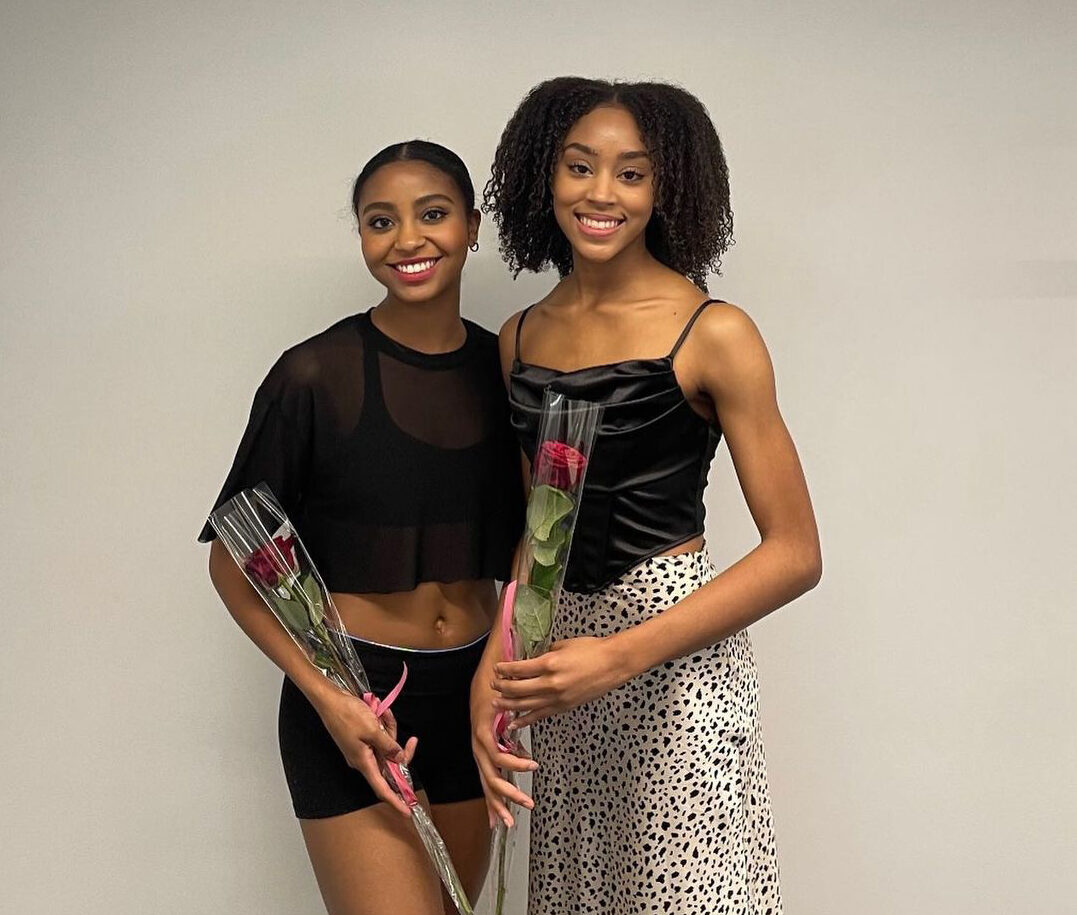
2023 Competition
ABT sent three members of the ABT family to Lausanne this year: Aleisha Walker, Madison Brown, and Lilia Greyeyes.
As friends, colleagues, and a stellar choreographic-dancer duo, ABT apprentice Aleisha Walker and ABT Studio Company member Madison Brown competed in the Young Creation Award competition for which Aleisha’s Do You Care? was one of five worldwide finalists out of over 80 entrants. Madison performed Aleisha’s solo in front of the Prix de Lausanne Jury and a live-streamed audience on Wednesday, February 1. Later that evening, Aleisha was honored with one of two coveted Young Creation Awards.
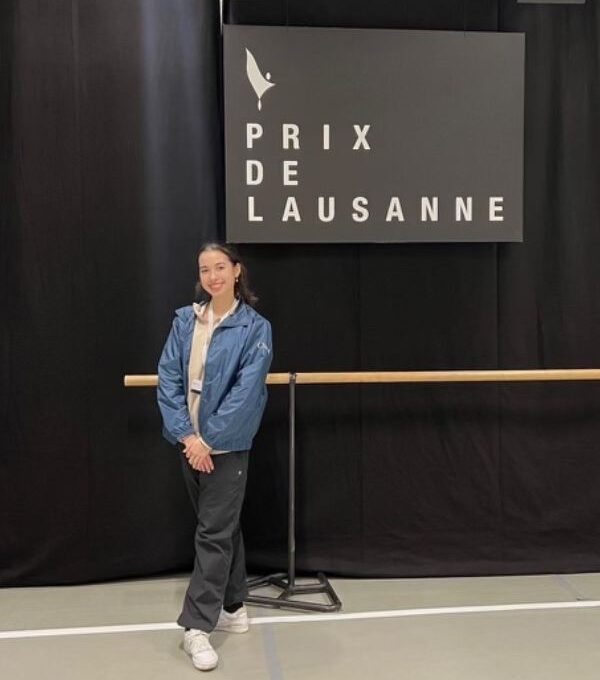
Aleisha’s solo Do You Care? set to “Nocturnal Waltz” by Johannes Bornlöf will now become part of the competition’s contemporary repertoire.
Representing the ABT JKO School in the Partner School Choreographic Project at the 2023 Prix de Lausanne, Lilia Greyeyes was part of a new work by Goyo Montero and performed with other representative students from Prix de Lausanne Partner Schools around the world. Lilia was recently promoted from the ABT JKO School to ABT Studio Company – congratulations!
Read Announcement
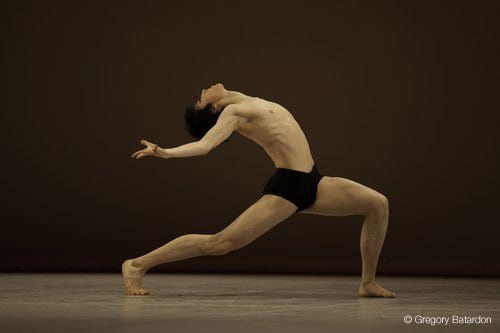
A Long (Impressive) History
Current ABT Dancers
To be honored at the Prix de Lausanne is an impressive achievement, and we are proud to have so many dancers from this respected bunch at ABT.
Current corps de ballet members Fangqi Li and Yoon Jung Seo were honored in 2017 and 2019, respectively.
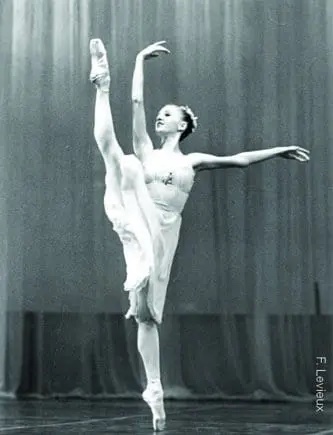
In 2014, Garegin Pogossian participated in the Prix de Lausanne and was awarded a scholarship to join ABT Studio Company. He has since graduated to the main Company is currently a member of the corps de ballet.
Current ABT dancers who received scholarships from the Prix de Lausanne include Soloist Zhong-Jing Fang (2000), Principal Dancer Hee Seo (2003), and Soloist Sung Woo Han (2011).
Principal Dancer Gillian Murphy was awarded the Prix de Lausanne “Hope” award in 1995 and served on the 2018 Prix de Lausanne Jury.
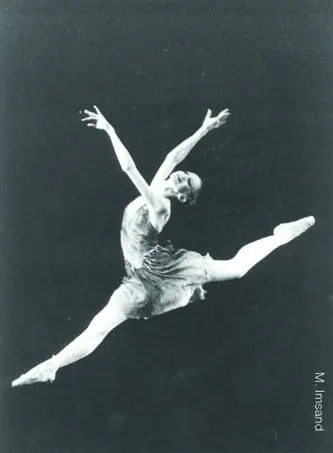
Former ABT Dancers
Although no longer dancing with ABT, our former dancers contribute to the rich history and partnership between American Ballet Theatre and the Prix de Lausanne – a list of past ABT dancer/Prix de Lausanne winners includes:
Former corps de ballet dancers Sarawanee Tanatanit, Zhang Zhiyao, and Nancy Raffa. Sarawanee won an apprenticeship at the 2001 Prix de Lausanne. Ten years later, in 2011, Zhang won a scholarship.
In 1980, Nancy was the youngest and first American female to win a gold medal at the Prix de Lausanne. She served on the 2012 Prix de Lausanne Jury and is now a Director of Repertoire at ABT.
Soloist Yuriko Kajiya won a scholarship at the 2000 Prix de Lausanne. She is now a principal dancer with Houston Ballet.
Former Principal Dancers Marcelo Gomes, Ethan Stiefel, Julie Kent, and Alessandra Ferri have also received awards. Marcelo won the Prix de Lausanne “Hope” award in 1996 and later served on the 2016 Prix de Lausanne Jury. Ethan won a cash prize in 1989, while Julie won a scholarship and later served on the 2023 Prix de Lausanne Jury. Alessandra additionally won a scholarship in 1980 and served on the 2014 Jury.
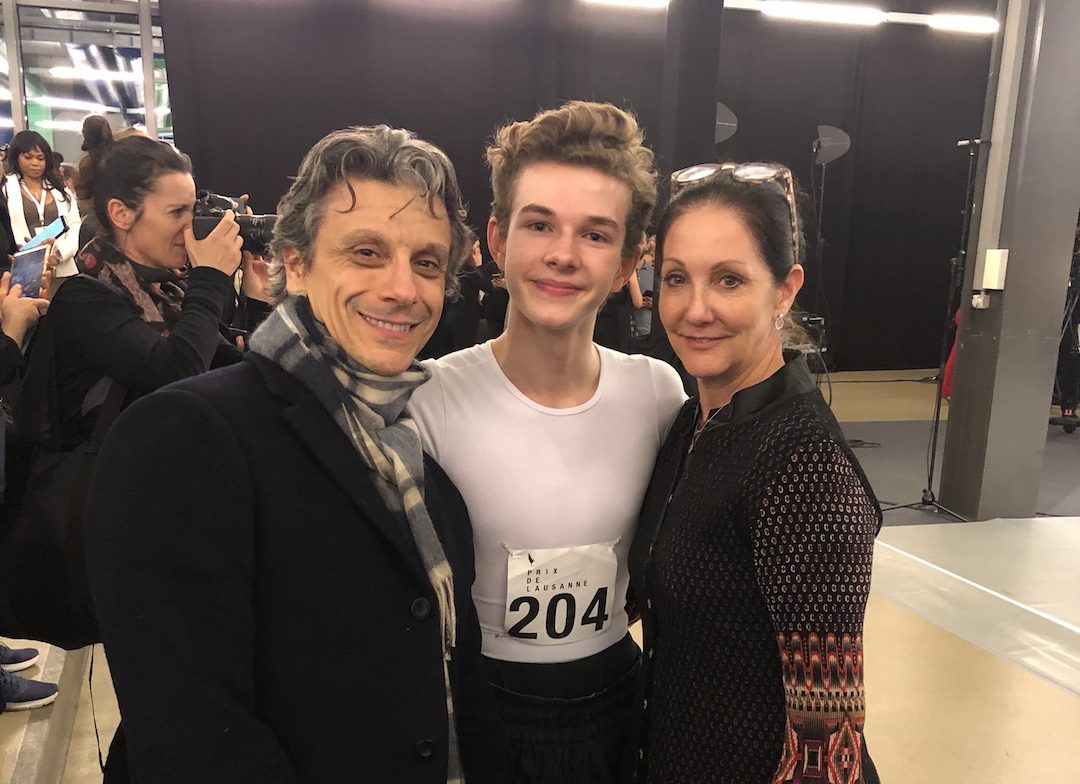
In addition to ABT dancers who won awards at the Prix de Lausanne early on in their careers, there are some former ABT dancers who have participated in the competition as established and valued pillars of the ballet community.
Julio Bocca, former Principal Dancer at ABT, has served on the Prix de Lausanne Jury on many occasions, including in 2014, 2018, and as President of the Jury in 2016.
Last, but never least, Cynthia Harvey was the President of the 2015 Prix de Lausanne Jury, as well as served as a Classical Variations Coach in 2016. Cynthia was a Principal Dancer with ABT, served as Artistic Director of the ABT JKO School from 2016-2022, and continues to teach at ABT as a member of the faculty.
October 25, 2022
Lifted
ABT presents a post-performance panel on the World Premiere work Lifted on Saturday, October 29, 2022
Join us for a post-performance panel discussion on Christopher Rudd’s World Premiere work Lifted, created with an all-Black cast and creative team. Free for all audience members, the discussion will follow ABT’s 2:00pm matinee performance of Lifted, Jessica Lang’s Children’s Songs Dance, and Jiří Kylián’s Sinfonietta on Saturday, October 29.
Moderated by author and professor Aimee Meredith Cox, the discussion will feature Lifted creators as panelists: Choreographer Christopher Rudd, ABT Dancers Calvin Royal III and Courtney Lavine, Fashion Designer Carly Cushnie, Kennedy Center Composer-in-Residence Carlos Simon, and Conductor Roderick Cox.
Lifted aims to highlight, amplify, and celebrate Black creative voices. ABT’s panel will create a forum to bring attention to the landmark nature of Rudd’s ballet and what it means for younger generations of dancers of color to see themselves represented on stage in this monumental way.
Learn More!
In July 2022, choreographer Christopher Rudd and Principal Dancer Calvin Royal III sat down for a discussion about Lifted. This conversation was first published in the Fall 2022 issue of ABT’s On Point newsletter.
This Fall, Christopher Rudd, dance-maker and founder of RudduR Dance, brings a historic first to American Ballet Theatre: Lifted. Utilizing an all-Black cast and creative team, this World Premiere highlights, amplifies, and celebrates Black creative voices. Lifted is set to music by Carlos Simon, with costumes by Carly Cushnie, lighting by Alan C. Edwards, and dramaturgy by Phaedra Scott. Roderick Cox will serve as Guest Conductor and Sarah Lozoff will provide Intimacy Direction.
Principal Dancer Calvin Royal III will perform in the World Premiere at ABT’s Fall Gala on Thursday, October 27. Recently, he sat down with Rudd to discuss the upcoming work.
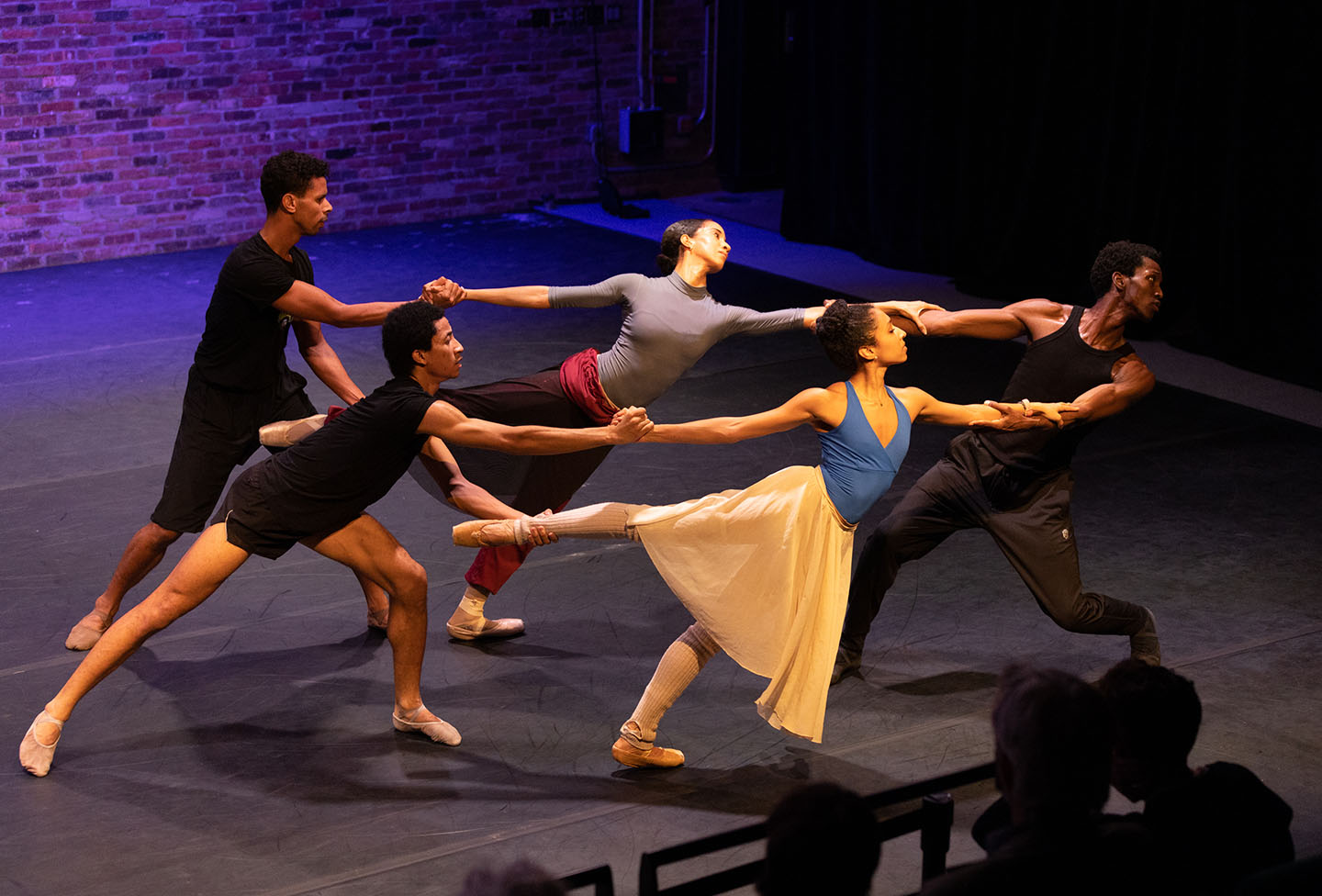
Calvin Royal III: What is the concept of your new ballet Lifted?
Christopher Rudd: I asked myself, “what could happen if the DNA of an entire ballet was made from Black people?” I thought about it shortly after George Floyd was murdered. And I realized it was something that the ballet world needed and I wanted, and the country can witness in a way that could make us feel, understand, and empathize with melanated people. At first, it was going to be a protest piece: shock and awe, in your face, a guttural thing. Now it’s been two years, and I feel like what I really need is a celebration of Blackness, a celebration of melanated people, a way to highlight our beauty, our talent, our lives, in a way that shows the evolution of a Black human. When we go into the studio, it’s about creating that picture of what a Black life is like, from before we’re born, into being born into our families, our communities, and the introduction of an interruption in our path to reach our full potential; and our ways of fighting against that, revolting against that, and thriving.
Royal: What do you envision the future of the piece being? Will it, in your mind, live on to be only the Black dancers, the Black creators, the Black conductor?
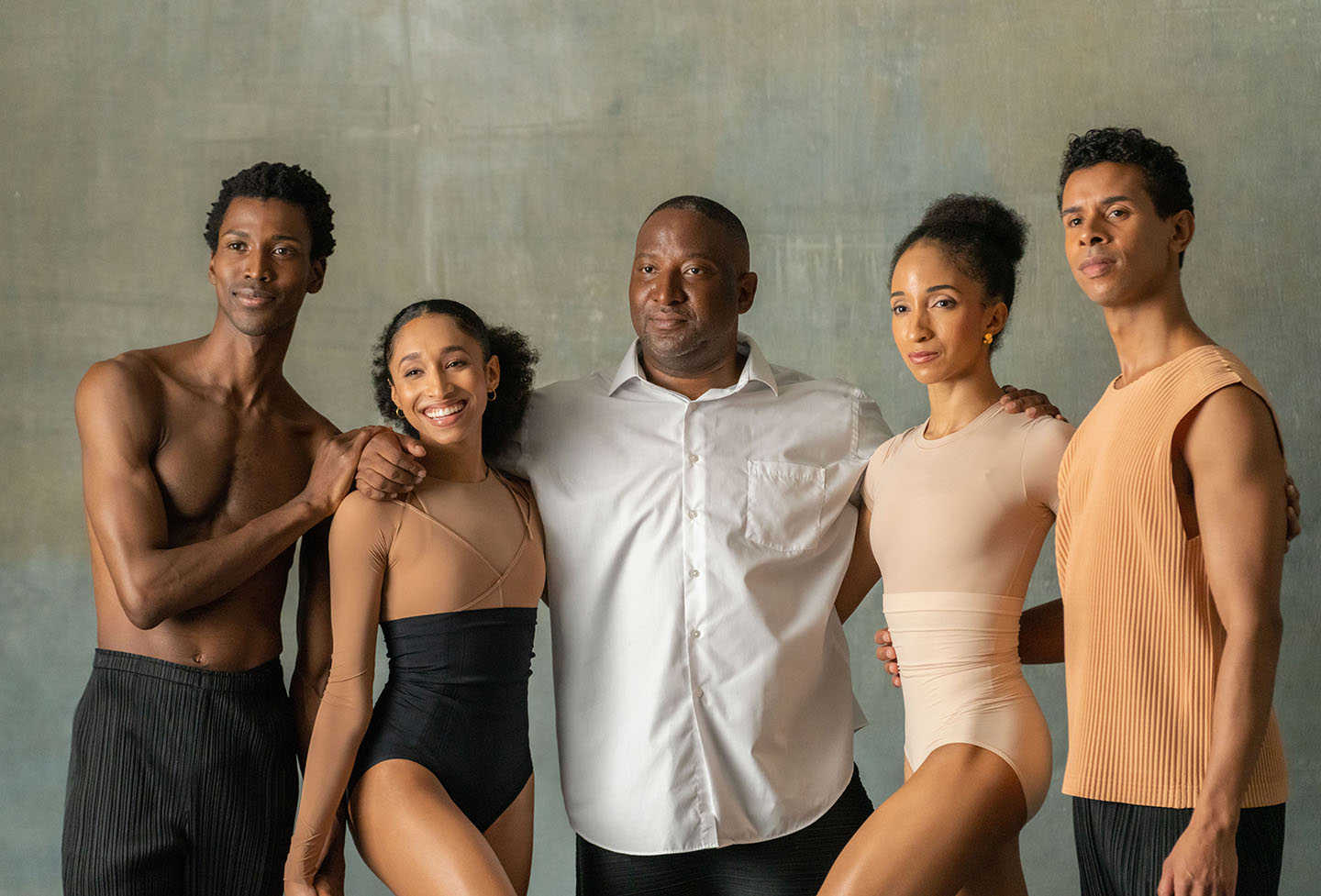
Rudd: I don’t intend for the work to perpetually and forevermore be Black. However, as the ranks of Black dancers grow within ABT, it’s going to be designed so that the more, the better. But one of the things that I’m curious about with this work is the idea that the DNA of the piece is still, was still, Black. Most of the roles that we do as ballet dancers come from white people. We, as Black dancers, especially in the classical field, have to embody these people who are Eurocentric, “princely” — which I wanted to do because I loved the roles. But I’m curious about the future of a work whose DNA was Black, and was created on ballet dancers, not modern dancers, and we just do it as a ballet company. But what does that do? The reality which I love to mirror in my thought process behind this is, in fact, we all started out as Black. And the DNA of us comes from Black people. And now we have a society. I’m curious what the work would look like, over time, if it followed the science of our species.
Rudd: What are you excited about for the piece, Calvin?
Royal: I am excited to, one, be back in the studio with you. And knowing that it’s the type of work that will evoke something that’s different from experiences that I’ve had at ABT thus far is exciting for me. Like when I found out that Touché [Rudd’s 2020 pas de deux for ABT] was going to be something different than I had ever done at ABT, it was exciting and I went into it with open arms, hoping that it would be something that would allow me to have a new perspective on myself as an artist and work with another creative team.
Royal: Opening night. The ballet is live. The curtain comes down after the dancers finish the piece. What do you hope audience members experience as they leave the theater after having witnessed Lifted?
Rudd: When I watched Touché live, I felt like I was watching the world change.
There’s something about being a part of the journey that you two were on… something about it was unifying for me. We were all breathless and soundless. There is something about that feeling that I’d like to bring back to the way this new work unfolds. It’s going to be a lot — it’s going to be longer, and it’s going to have its peaks and valleys. I’m actually curious about that journey. But I want to evoke that feeling of the world has changed now.

